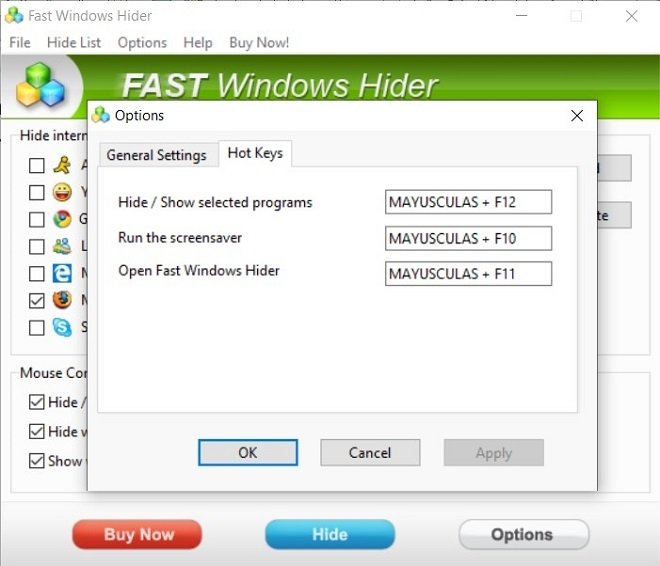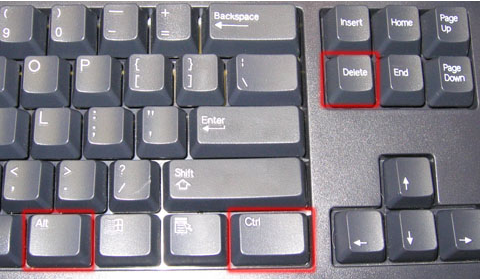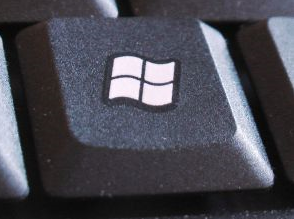- Best Ways to Quickly Hide Windows Applications
- CTRL + ALT + DEL
- Windows Key + D
- Screensaver Shortcut
- Third Party Utilities
- Windows Hide Tool
- ClickyGone
- Hide Taskbar in Windows 10 with a hotkey
- Hide Taskbar with a hotkey
- Hide Taskbar Free Download
- Related Posts
- Apps keep pinning themselves on startup to the taskbar
- How to show Taskbar in Full-Screen mode on Windows 10
- How to Restart or Reset Windows 10 Taskbar
- [email protected]
- Reader Interactions
- Comments
- How to hide Windows 10 windows with a keyboard shortcut
Best Ways to Quickly Hide Windows Applications
Sometimes you don’t want people to see what you are doing
You’ve probably run into the situation at home or at the office where you were doing something confidential on the computer and someone else came by right at that time. If you haven’t planned ahead of time, the only thing you could do is try to minimize the application, which is fairly slow and will give the other person enough time to see what you were doing.
In this article, I’m going to show you a couple of methods for quickly hiding your applications and windows, some of which will be more obvious than others. Depending on who you are trying to hide the windows from (boss, kids, wife, etc), your optimal method may be different.
CTRL + ALT + DEL
My favorite method by far is to simply press CTRL + ALT + DEL and then press Enter. By default the Lock Computer button is highlighted. Pressing the three keys will bring up a dialog with a few options like Lock this computer, Switch user, Log off etc. Pressing Enter will automatically select Lock this computer.
This is the best method to hide everything on your desktop. The only downsides are it’s not very subtle and you have to press the same key combo plus your password to unlock the computer.
If you have a keyboard that has the Windows key on it, you can also press Windows Key + L. This is a much faster method to lock your PC than pressing CTRL + ALT + DEL and then pressing Enter.
Windows Key + D
If you don’t want to have to enter your password again, you can try a different keyboard shortcut. No matter how many programs or windows you have open on your desktop, you can minimize all of them by pressing Windows Key + D.
This will minimize everything that is open on the desktop. Of course, you have to have a Microsoft keyboard that has the actual Windows key on it.
This key combo is very similar to the Show Desktop button that used to be on the taskbar in Windows XP. If you really liked that feature, you can enable the Show Desktop icon in Windows 7 too. I also tested adding the quick launch toolbar to Windows 8 and enabling the Show Desktop icon there too. Windows Key + D also works just fine on Windows 7 and Windows 8 without having to enable the Show Desktop icon.
Screensaver Shortcut
Another nifty way to hide your desktop is to start up the screen saver. All screensavers are stored in Windows using the .SCR file extension. Go ahead and perform a Windows search for *.scr and you should get a list of all the screensavers on your computer.
Now all you have to do is create a shortcut to any of these files on your desktop or quick launch bar. Just double-click on the shortcut and your screensaver starts up automatically, no need to wait for the idle time to kick in!
You can create a shortcut to the .SCR file by right clicking on it, going to Send To and choosing Desktop (create shortcut).
If that’s not fast enough for you or your hands tend to be on the keyboard more than the mouse, then you can also use a program called AutoHotKey to assign a hotkey to run the .SCR file whenever you want. There is a bit of a learning curve to using AutoHotKey, but it is quite powerful even if you use only a small fraction of its features.
Third Party Utilities
All of the methods above require keyboard interaction, which is ok for laptop users, but may be slower for desktop users who have their hands on a mouse most of the time. There are some really good freeware utilities that will let you hide individual applications or all applications using hotkeys or mouse clicks.
Windows Hide Tool
Windows Hide Tool is probably my favorite little program for hiding Windows programs because it’s easy to use and works very effectively. The best part is that it removes the program icon from the Windows taskbar in addition to hiding it from your desktop. This will make it seem like the program wasn’t even running on your system.
Once you install it on your system, a small blue icon will appear in your notification area. By default, clicking on the icon will hide the active window on your desktop. Clicking on the icon again will bring that application back.
If you right-click on the icon, you’ll see a bunch of options like Hide All Windows, Show All Windows, Hidden Windows, etc. Those are all pretty obvious as to what action they will perform.
If you click on Preferences, you’ll be able to set up the hotkeys and change what happens when you either single-click or double-click on the icon in the notification area.
By default, single clicks will hide/show the currently active window. You can change this to multiple combinations or hiding/showing all windows. What’s also cool about the program is that you can set a password when showing a window, closing an application or when opening the preferences dialog for the program.
So even if you leave your computer and someone tries to bring up the hidden program, they will have to type in a password in order to see it. There are no hotkeys set up initially, but you can quickly set them here by clicking in the box and then pressing the key combo you want.
ClickyGone
ClickyGone is another program that pretty much does the same thing, but with different options. Once you install it, an icon will appear in the notification area. Right-click on it and choose Config.
The Start screen tells you the current shortcuts for hiding windows in various ways. To click and hide, for example, you need to press and hold down CTRL + ALT and then click anywhere on a window. That program will disappear and can be bought back by using the Toggle All Windows keyboard shortcut, by right clicking on the icon in the system tray or by pressing the Clicky Gone Menu keyboard shortcut.
It’s worth noting that the program lists out the shortcuts with the modifiers at the end rather than the beginning. For example, to hide the active window, press SHIFT + CTRL and then press \. The way it shows it in the program, you would think you need to press \ and then SHIFT + CTRL, but that won’t work.
On the General tab, you can choose whether to show the icon in the system tray or not, whether to show hidden programs in the system tray and whether to prevent accidental clicks on full screen apps.
All of the screens after Advanced basically let you adjust the hotkeys for performing various tasks like hiding the active window, clicking to hide, showing the ClickyGone menu, etc. The only feature this program doesn’t have that I liked in Windows Hide Tool was the ability to set a password before bringing back hidden windows.
Hopefully, these are enough tools and options for you to properly hide your data and applications from prying eyes. If you have any questions, feel free to comment. Enjoy!
Founder of Online Tech Tips and managing editor. He began blogging in 2007 and quit his job in 2010 to blog full-time. He has over 15 years of industry experience in IT and holds several technical certifications. Read Aseem’s Full Bio
Hide Taskbar in Windows 10 with a hotkey
We are pleased to release Hide Taskbar. While you can always use the Auto hide taskbar feature to hide the taskbar and make it appear only when you take your mouse pointer down to the bottom of the desktop, Hide Taskbar lets you hide only the taskbar, and not the Start Button, with a click.
Hide Taskbar with a hotkey
Simply download and run the app. Use hotkeys Ctrl+Esc to hide or un-hide the taskbar.
And why would you require such a program? The reason could be well, you love a clean desktop and don’t want even a taskbar to mar your wallpaper or maybe you are working on something, and you want to suddenly hide all the other minimized windows or well it could be simply because you think it looks cool to hide and un-hide the taskbar.
You may also find this app of interest if you use a Dock like RocketDock.
This app does not hide the taskbar automatically on running it, but allows you to choose, using the hotkeys when to hide and un-hide! Moreover, Hide Taskbar leaves a very low memory footprint.
To have it run on every start-up, place its shortcut in the following folder:
And what gave us the idea to develop this portable freeware app? Simply because someone at TWC Forums put in a request.
Hide Taskbar Free Download
Hide Taskbar v 1.0 has been developed by Ritesh Kawadkar for Windows Club. It is tested on Windows 7. It should work on Windows 10/8 and Windows Vista too!
If you want to give feedback about Hide Taskbar at TWCF here.
Date: April 16, 2018 Tags: Taskbar, TWC App
Related Posts
Apps keep pinning themselves on startup to the taskbar
How to show Taskbar in Full-Screen mode on Windows 10
How to Restart or Reset Windows 10 Taskbar
[email protected]
Anand Khanse is the Admin of TheWindowsClub.com, a 10-year Microsoft MVP (2006-16) & a Windows Insider MVP. Please read the entire post & the comments first, create a System Restore Point before making any changes to your system & be careful about any 3rd-party offers while installing freeware.
Reader Interactions
Comments
Steve Zussino says
Thank you for this app!
What a great idea.
Like the idea. but, it would be more useful if it can hide the files/shortcuts on desktop too.
I’ve include this app to the switcher in Rainmeter.
This is the code but please
¡Gracias! aplicación fantástica…Thank you great app!
James the Melon says
The .exe seems corrupted. Shame, this seemed like a great little tool.
Maybe it was your download that got corrupted. Please try again.
Where’s the help file?
It does hide the taskbar, but it not resize the windows to fit the whole screen…
For this, you need to Auto-hide the task bar (propierties).
Then, execute this program.
you can do that in windows without a program
It does hide the task bar. But even if you add the programm to the starting programms of windows , u still have to press CTRL+ESC in order to get rid of the bar =./
Or for true auto-hide taskbar hotkey, install the very inexpensive older automation program, KeyText, and assign a keyboard shortcut to the following KeyText script (you can reduce or maybe even remove the Pause commands for faster action):
It works well on my Win7 machine (64-bit), and I like auto-hide better than this Windows Club program because when auto-hide is enabled, my firefox browser, etc will immediately expand to use the additional real estate, and display more of the webpage. Same goes for reversing the auto-hide (which I believe was more problematic in older Windows like XP, etc.
Btw, Keytext works for lots more, including “text triggers” — keyboard macros (maybe mouse too, etc) triggered by typing any preset character(s) you choose. Personally, I use the semi-colon character + additional character(s) + space to trigger my Keytext “text triggers”. (just a tip. can’t help myself.)
One thing that KeyText can no longer be relied upon to do — sadly!! — is to automatically control program menus, based on the menu command names. With most programs, however, you can use ALT+ keyboard shortcuts in keytext as a workaround, and/or mouse coordinates relative to the program window. (This menu-command feature still exists in KeyText, but it’s just not a reliable form of automation anymore in Windows. Keytext hasnt been updated for a while, alas, perhaps due to the popularity of AutoHotKey and the like, or simply due to the waning of the dot-com boom.)
As you might guess from the last paragraph, I have no ties w/ KeyText or the company that makes it, etc. Just a long-time user, and a some-time advocate.
this was perfect for what I wanted 🙂 will it work on windows 8 too?
How to hide Windows 10 windows with a keyboard shortcut
We show you some simple ways to make the active window of Windows disappear and to completely minimize all the applications
Natively, Windows 10 lets you manage the windows on your desktop without touching the mouse. For that purpose, the Microsoft operating system includes some keyboard shortcuts that will help you resize any application, jump between windows, or minimize them quickly. In this article, we will focus on this last aspect.
To minimize the application you are working with, you can use different methods:
- Windows + ↓: Using this combination, any full-screen window will be minimized in size. If used again, the window is completely minimized. Using the opposite combination, with the upward arrow, the windows are restored.
- Windows + D. This keyboard shortcut sends all windows to the taskbar. One of the advantages of this shortcut is that, if used again after minimizing all the windows, they are restored to their previous state. It is very useful to hide and make applications appear quickly.
- Windows + M. By using these two keys simultaneously, Windows displays the desktop. Therefore, the effect is very similar to the previous combination, but it does not let restoring the applications.
In addition to these shortcuts, you can use other advanced applications to quickly hide open windows on your screen.
For example, Fast Windows Hider lets you make a specific list of applications disappear, or mute those in which a sound is playing. Also, among its functions, you will find the possibility of hiding the task-bar application.

All these actions can be associated with a specific keyboard shortcut, similar to the ones we mentioned before, that lets the user activate and deactivate them quickly.
However, in most cases, the Windows 10 window management system will be enough to quickly hide the active application.

















